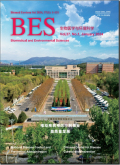Nogo-A Protein Mediates Oxidative Stress and Synaptic Damage Induced by High-Altitude Hypoxia in the Rat Hippocampus
摘要Objective High-altitude hypoxia exposure often damages hippocampus-dependent learning and memory.Nogo-A is an important axonal growth inhibitory factor.However,its function in high-altitude hypoxia and its mechanism of action remain unclear.Methods In an in vivo study,a low-pressure oxygen chamber was used to simulate high-altitude hypoxia,and genetic or pharmacological intervention was used to block the Nogo-A/NgR1 signaling pathway.Contextual fear conditioning and Morris water maze behavioral tests were used to assess learning and memory in rats,and synaptic damage in the hippocampus and changes in oxidative stress levels were observed.In vitro,SH-SY5Y cells were used to assess oxidative stress and mitochondrial function with or without Nogo-A knockdown in Oxygen Glucose-Deprivation/Reperfusion(OGD/R)models.Results Exposure to acute high-altitude hypoxia for 3 or 7 days impaired learning and memory in rats,triggered oxidative stress in the hippocampal tissue,and reduced the dendritic spine density of hippocampal neurons.Blocking the Nogo-A/NgR1 pathway ameliorated oxidative stress,synaptic damage,and the learning and memory impairment induced by high-altitude exposure.Conclusion Our results demonstrate the detrimental role of Nogo-A protein in mediating learning and memory impairment under high-altitude hypoxia and suggest the potential of the Nogo-A/NgR1 signaling pathway as a crucial therapeutic target for alleviating learning and memory dysfunction induced by high-altitude exposure.
更多相关知识
- 浏览0
- 被引0
- 下载0


相似文献
- 中文期刊
- 外文期刊
- 学位论文
- 会议论文



 换一批
换一批 换一批
换一批



